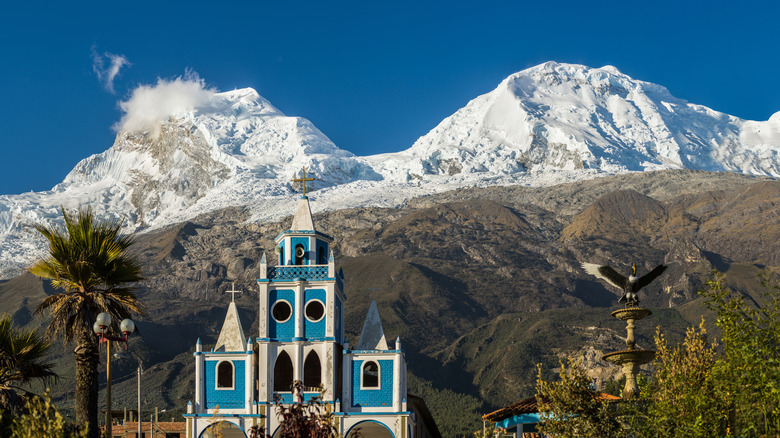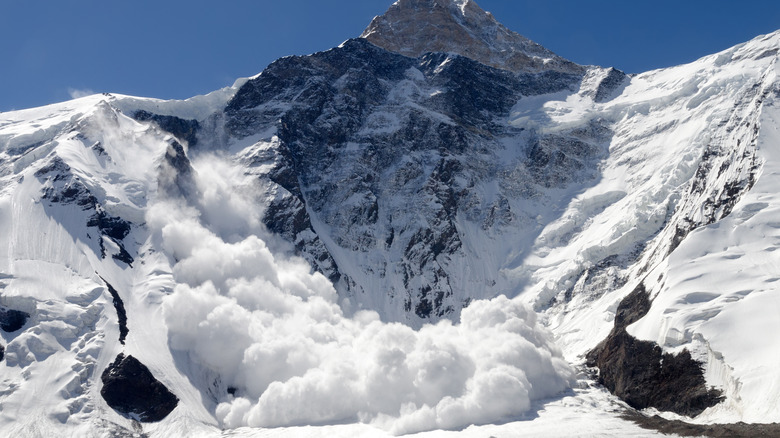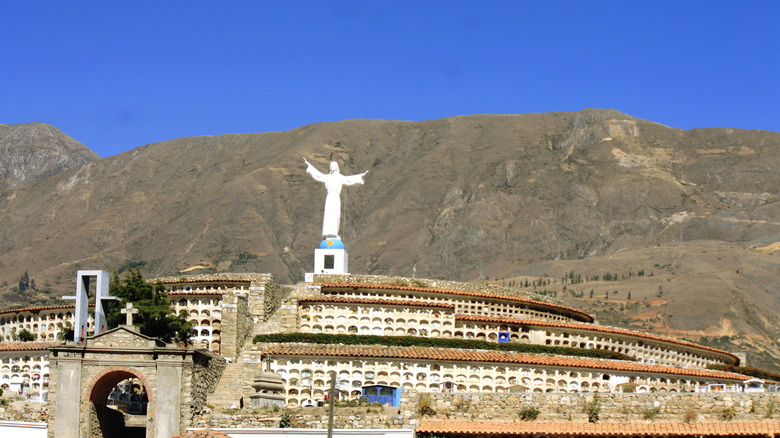The Tragic Story Of The Huascaran Avalanche In Peru
Peru is one of the most fascinating countries in South America, and its wonders go beyond Machu Picchu. During the whole year, experienced climbers travel to Peru to climb Mount Huascaran, which rises 6,768 meters above sea level. It is easy to understand the fascination about Huascaran: The mountain is the highest point in the tropics, and climbing it is a significant achievement (via Unesco). Unsurprisingly, it is not an easy expedition. Climbing Mount Huascaran can take up to 21 days, and climbers will often find large crevasses and unstable weather on their way.
Besides its magnificent beauty, Mount Huascaran is also the cause of one of the most catastrophic natural disasters in Peru's history. According to History, 4,000 people were killed after a wall of ice was dislodged from the mountain. However, another avalanche would surpass the first tragedy eight years later. In 1970, an earthquake triggered an avalanche that killed 70,000 people and caused the disappearance of Yungay, a small town, as well as 10 nearby villages.
The worst catastrophic natural disaster in Peru
On May 31, 1970, most people in Peru were watching a match between Brazil and Italy during the FIFA World Cup. However, they were interrupted at 3:23 p.m. local time, when an earthquake, reaching 7.75 on the Richter scale, struck off the country's coast (via AMC Museum). According to BBC, the epicenter was in the Pacific Ocean, 21 miles away from the Casma coast.
The earthquake lasted for 45 seconds, and it was strong enough to reach different parts of Peru, such as Iquitos and Pisco, and in the neighboring countries Brazil and Ecuador. The earthquake reached Mount Huascaran, destabilizing a glacier on the north side, and millions of tons of snow, rocks, and mud tumbled down. The most devastating of them was a rock weighing 700 tons (via BBC).
Everything happened too fast. The rock was moving at 120 miles per hour, and most people didn't have time to run. According to The New York Times, the roofs collapsed and the floors crumpled, and "those who ran into the streets were caught by falling walls."
According to AMC Museum, 25,000 people lived in Yungay in 1970, and the avalanche buried 18,000 of them. The catastrophe also killed 10,000 people in Huras. In Ranrahirca, 20,000 people died, and only 400 people survived. Another 20,000 people disappeared and were presumed dead.
A clown saved hundreds of children
Ironically, most of the survivors were people who could reach the Yungay cemetery, built on an artificial hill. Later, those people reported that the sky went dark due to the dust, and they could see the city disappearing in a few minutes.
A few hours before the earthquake, 300 children went to a circus in a stadium outside the town, and a clown saved them. "The clown led the children to safety like the Pied Piper. As soon as the earthquake struck, he led them from his tent to higher ground," a tour guide said, according to Peruvian Times.
There is no information about the clown who saved the children. Sadly, most of those children became orphans and had no home to return to since the village had disappeared.
Yungay became a national cemetery, and the government doesn't allow any excavations in the area. However, survivors and families of people buried there found a way to honor their memory by putting crosses and tomb marks on the spots where their houses used to be.


